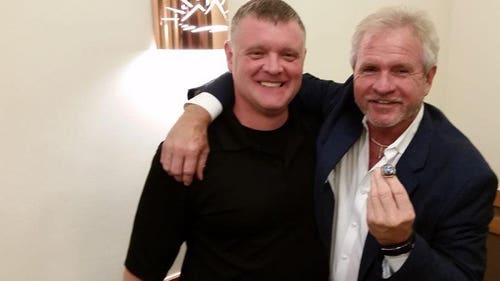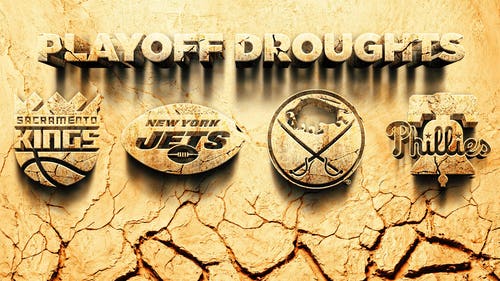
The good and bad of baseball's new rules for the 2021 season
By Ben Verlander
FOX Sports MLB Analyst
Some big changes are coming to professional baseball this season.
From Triple-A down, every level of the minor leagues will see a rule change implemented in 2021. These rules and changes have been talked about for a few years, and now they will be tested for the big leagues.
We should all be paying attention to what is going on because if these rule changes go smoothly, we could see them in the major leagues as soon as next year.
So let’s go over the new rules, level by level, because like it or not, this is happening.
Rule: Larger bases
Level: Triple-A
The size of the first, second and third bases in Triple-A will be expanded from 15 square inches to 18 square inches.
This is first and foremost to reduce injuries and collisions. When running full-speed down the line to first base, there isn’t always a lot of room for the runner to touch the base with the first baseman’s foot right there on the edge.
Injuries aside, it is expected that larger bases will result in a few more infield hits and stolen bases.
My thoughts: This rule makes complete sense to me. It won’t make the biggest difference in terms of infield singles and stolen bases, but with the base 3 inches closer to the runner, we will see more of both. If this rule results in more stolen base attempts and, more importantly, fewer injuries, count me in.
I also like this because I think it allows runners more ways to get creative when diving into bases. I think we could see some cool things if this rule ends up sticking.
Rule: Defensive positioning
Level: Double-A
This one has been talked about for the past few years: the defensive shifts rule.
To start, it states that the defensive team must have four players in the infield, and each must have both feet in the dirt within the outer boundary of the infield. Depending on how that goes, the rule could also make it mandatory to have two players on each side of second base.
My thoughts: I hate it. To be clear: I despise this rule. Now, I wouldn’t necessarily say I love the shift, but I also don’t hate it.
This is baseball. You get eight defenders in the field, and their one and only job is to make sure they defend the baseball so that the other team doesn’t score runs.
If a pitcher is allowed to look at a scouting report and see that I can’t hit a slider (which I couldn’t), that pitcher will throw me 90% sliders (which they did). When a defense sees that a batter hits the ball in one area 90% of the time, why shouldn't they be allowed to put extra defenders there?
Rule: "Step off" rule
Level: High-A
With this rule, pitchers are required to disengage from the rubber on the mound prior to throwing to any base. In the event that a pitcher fails to comply, the penalty will be a balk.
Currently, when a pitcher is on the mound, he doesn't have to step off the rubber before attempting to pick off a batter. Essentially, the pitcher can jump and turn at the same time and quickly get the runner scurrying back to the base. With this change, the process of picking off will take a lot longer, leading to larger leads off of bases and more stolen base attempts.
My thoughts: I don’t love this rule and don’t see it making its way to the big leagues.
Rule: Pickoff/step off limitation
Level: Low-A
With this change, pitchers will be limited to two "step-offs" or "pickoffs" while there is at least one runner on base. The pitcher may pick off a third time, however, if the runner gets back safely, the result is a balk and the runner advances.
MLB is considering changing this to one "step-off" or "pickoff" attempt, depending on how the beginning of the season goes with this new rule. This change will be implemented in both Low-A leagues.
My thoughts: I’m seeing a theme here. Baseball wants more stolen bases and is starting to implement rules to help the baserunners. This change I don’t mind because pitchers attempting pickoffs over and over can really drag out a game.
Now, I am not one of those people concerned about the length of baseball games, but when pitchers throw to a base more than five times in an at-bat, it really gets annoying. For that reason, I’m fine with this rule.
Rule: Pitch timer
League: Low-A West
Following successful pace-of-play rule changes in the Florida State League (high-A) in 2019, the league is continuing to experiment. With this change, there will be one timer in the outfield and two behind home plate between the dugouts. The timers will be used between innings to make sure the first pitch of each inning is thrown by a certain time, between pitches and during pitching changes. More potential regulations could be added.
My thoughts: I'm totally fine with this. In fact, I like it. I have no problem, as I stated earlier, with baseball games taking a while. That said, pitching changes can take forever, and some pitchers take way too long between pitches.
I got to experience this rule when I played in the minor leagues, and I thought it worked pretty smoothly.
Rule: Automatic ball/strike system
League: Low-A Southeast
Here it is. The big one. The automatic ball/strike system (ABS) has been implemented in the Atlantic League, an independent professional baseball league, and tested in the Arizona Fall League. Now it is time to bring it to the minor leagues.
There will still be an umpire standing behind home plate. In the Atlantic League, the automatic strike zone was the definitive voice in determining balls and strikes. With this ABS implementation, the league states, "It will be used to assist home plate umpires in calling balls and strikes." That makes it seem that the system will not be the end-all, be-all when it comes to what is a ball and what is a strike.
My thoughts: I am on board with this. Like it or not, an automatic strike zone is coming to Major League Baseball eventually. I understand this is taking the human element out of the game, but it seems like more and more umpires are letting their egos become part of the game, and that just can’t happen.
At the end of the day, there is a home plate. It is 17 inches wide. If the ball touches a corner, it’s a strike. If the ball doesn’t, it’s a ball.
I stepped into the batter’s box thousands of times over the course of my career. I could tell you when a pitch was a strike, and I could tell when a pitch was 2 inches off the plate. What became annoying was umpires rewarding pitchers by giving them pitches off the plate. It might be a good pitch, but if it quite literally isn't on the plate, it should be a ball.
The issue for me with the ABS has always been how awful it is at actually calling balls and strikes. I remember watching some Arizona Fall League games with pitches bouncing in the dirt and being called strikes because technically, they clipped the bottom of the strike zone.
A lot of work needs to be done here, and it sounds like that is what’s going to happen. Baseball is going to analyze games and figure out exactly what the best strike zone looks like. For that reason, I’m on board with this. The ABS is inevitably coming to the major leagues, and baseball needs to fix it so it can be implemented correctly.
There you have it! Those are the new rules coming to baseball in this 2021 season.
MLB senior vice president of on-field operations Raul Ibanez (yes, THAT Raul Ibanez) said, "These experimental rules are designed to put more balls in play, create more excitement on the basepaths and increase the impact of speed and athleticism on the field."
Seems to me, if that is the goal, these rules are going to achieve that. There will be more stolen bases, and there will be more attempts at bunting for base hits.
These rules will certainly change the way the game is played, but that isn’t a bad thing. The game is always evolving, with players getting bigger and stronger and faster. Plus, with these experiments in the minors, baseball fans have the chance to observe and assess as we wait to see which changes make their way to the bigs.
But get ready. Because rule changes are coming — and soon.
Ben Verlander spent five years in the Detroit Tigers organization. Born and raised in Richmond, Virginia, Verlander was an All-American at Old Dominion University before he joined his brother, Justin, in Detroit as a 14th-round pick of the Tigers in 2013. Follow him on Twitter @Verly32.










